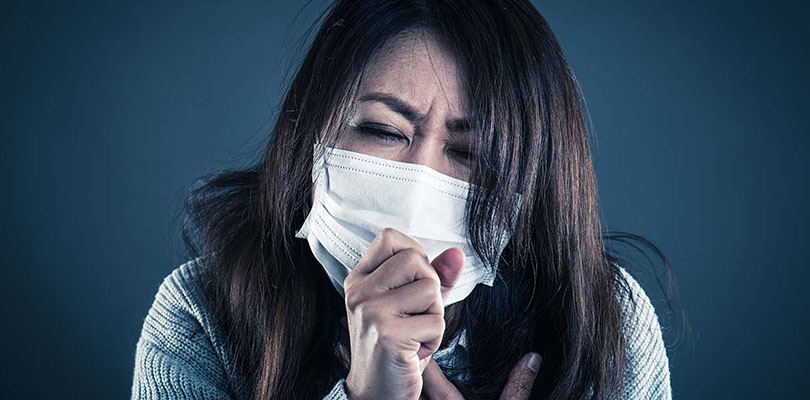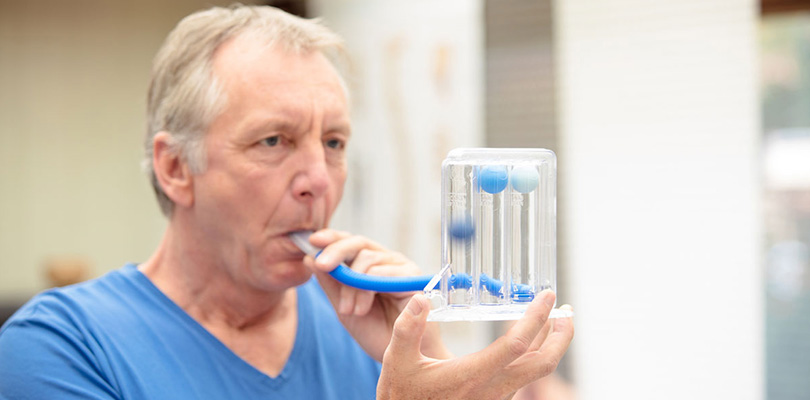How Fast Does COPD Progress?
COPD is a progressive lung condition, which means it gradually gets worse. It’s helpful to think of COPD in stages.
The disease may be mild at first with only occasional symptoms, such as shortness of breath, wheezing, and coughing. As time goes on, symptoms may become moderate, which may mean they occur more often and interfere with daily activities. When COPD becomes severe, individuals may have symptoms most of the time.
How Fast Does COPD Progress?
It’s difficult to determine an exact timeframe for the progression of COPD. It’s important to remember that every person with COPD will have their own unique experience with the condition.
Some people have an increase in symptoms and their health declines quickly. Others remain at the same stage of the disease for many years.
The rate at which COPD progresses often depends on how compliant a person is with their treatment plan and their lifestyle choices.
Identifying COPD Progression
It’s important to know if your COPD is getting worse. Protocols change based on the stage or severity of your condition. Indications your COPD is progressing may include the following:
Increase in symptoms: If symptoms are becoming more frequent or severe it can be a sign that your COPD is progressing. For example, if you are using your fast-acting inhaler more often without relief, or you experience an increase in shortness of breath at most times, it can indicate that your disease is worsening.
A decline in lung function: Periodically, your doctor may order a spirometry lung function test to measure your lung function. One of the key indicators of COPD is your forced expiratory volume (FEV1). An FEV1 measures the amount of air you can forcefully exhale in one second. The result of your FEV1 helps your doctor diagnosis the stage of your disease. If your FEV1 is getting worse, it can be a sign that your COPD is progressing.
Slowing Down the Progression of COPD
There is currently no cure for COPD. It is also not possible to reverse the damage done to the lungs. But the good news is there are things you can do to slow the progression of the condition. These preventative measures including the following:
Stop Smoking
One of the best things you can do to slow the progression of COPD is to quit smoking. If you continue to smoke, your lung damage will increase. By quitting smoking, you can reduce how fast your lung function declines.
Quitting may be challenging for some people, but it is well worth the effort.
Follow Your Treatment Plan
Once you are diagnosed with COPD, your doctor will develop a treatment plan. Treatment may include medications, oxygen therapy, airway clearance devices, and limiting exposure to airway irritants. It’s important to follow your treatment plan to prevent your symptoms from getting worse.
Failure to follow your plan might cause a COPD exacerbation. Each time you experience an exacerbation—especially if it requires hospitalization—it has the potential to speed up the progression of your disease.
Attend Pulmonary Rehabilitation
Pulmonary rehabilitation programs provide education on managing COPD, such as learning breathing techniques. Programs also incorporate monitored exercise. Pulmonary rehab is thought to decrease COPD exacerbations, hospitalization, and may help slow the progression of the disease.
You may think vaping is a good alternative to smoking, but vaping can lead to lung disease. Here's all you need to know about COPD and vaping.
According to a study in the International Journal of Chronic Obstructive Pulmonary Disease, 92 percent of people that attended a pulmonary rehabilitation class showed clinical improvement. Hospital stays were also decreased by 54 percent compared with the previous year. Over half of the patients also continued an exercise program after the completion of the pulmonary course.
Maintaining a regular exercise program is good for your muscles, heart, and lungs. Staying active can help you maintain your lung function and may slow COPD progression.
Treat Co-existing Medical Conditions
Many people with COPD have additional medical problems. For example, when the lungs don’t work properly, it can lead to additional health issues including cardiac disease.
COPD also tends to develop later in life when it’s more common to have other health issues. Having multiple medical problems may speed the progression of each condition, which is why treating co-existing conditions is so vital.
Choose Positive Lifestyle Habits
Positive lifestyle choices—such as getting regular exercise, maintaining a healthy weight, and getting enough sleep—can boost your overall health. Living a healthy lifestyle may not only improve your quality of life, but it may also slow the progression of COPD.
Take Steps to Prevent Respiratory Infections
Respiratory infections, such as pneumonia or the flu, can lead to serious complications in people with COPD. Infections can also speed up the progression of the disease.
You should take steps to decrease your risk of an infection, such as getting your flu shot every year and getting a pneumonia vaccine as prescribed by your doctor. Practice good hand hygiene and avoid being around people that are sick as much as possible.
Overview
Always keep in mind that although COPD is progressive, the rate of progression varies greatly between patients.
By taking some of the steps above, you may be able to slow the rate of progression. Also, by slowing the rate of progression, you might decrease flare-ups, live longer, and improve your overall quality of life.







